My Composing Process: Charlie Chaplin's "The Immigrant" (1917)
Dear Readers.
I recently finished an intense three-month project for my University of Edinburgh master’s thesis: scoring Charlie Chaplin’s timeless and thought-provoking 1917 film The Immigrant.
This score is one of the most complicated pieces of music that I’ve composed. In addition to orchestral textures, the film score contains ambient nature and city soundscapes, distorted live flute, synthesizers, sampled instruments, live violin and live-recorded sounds that I crafted into complex rhythms. All of these elements add up to a score that captures the sense of discombobulation and stress, but also that wonder, that Chaplin’s character feels as he immigrants to, arrives at and survives in America.
A Visual Reaction
About a month into the process of scoring this film, I decided to experiment by reacting to the film visually. I did this by drawing random lines on pieces of paper as I watched the entire 24-minute film without sound. I went through this process twice, in black and white with pencil and then with four colored pencils (red, orange, green and blue). The result was a cacophonous deluge of lines and shapes that represented my subconscious reaction to what was happening on screen.
I realized that though this film is largely a comedy and a romance, it also deals with dislocation, pain, destitution, hunger, sickness and violence. Chaplin’s character is frequently in uncomfortable situations: seasick, hungry, roughly treated by crew members and fellow passengers and harassed by angry waiter in a restaurant. This visual reaction shows this chaos amid the comedy and romance.
Using sections of this visual reaction, along with screenshots from the film, I created the image that represents my thesis as a whole: a ghostly image of Chaplin in blue (see below). You can see Edna Purviance on the right and a burnt-in image of a crew member on the left. I created this image by making the screenshots and the visual reaction images transparent, so the images bled though like a double exposure. This image, like my score, captures a sense of intense worry.
My visual reaction for The Immigrant. You can see specific moments in the film hidden in here. Like the large heart in the upper left represents the moment that Charlie first sees Edna in the dining hall of the ship. The face in the bottom left sheet represents the Artist character. The large amount of squiggly lines in the upper right represents the arrival at Ellis Island, when Charlie says goodbye to Edna.
The main image for this thesis, crafted from a number of screenshots from my visual reaction and the film itself, adding up to this ghostly, eerie image.
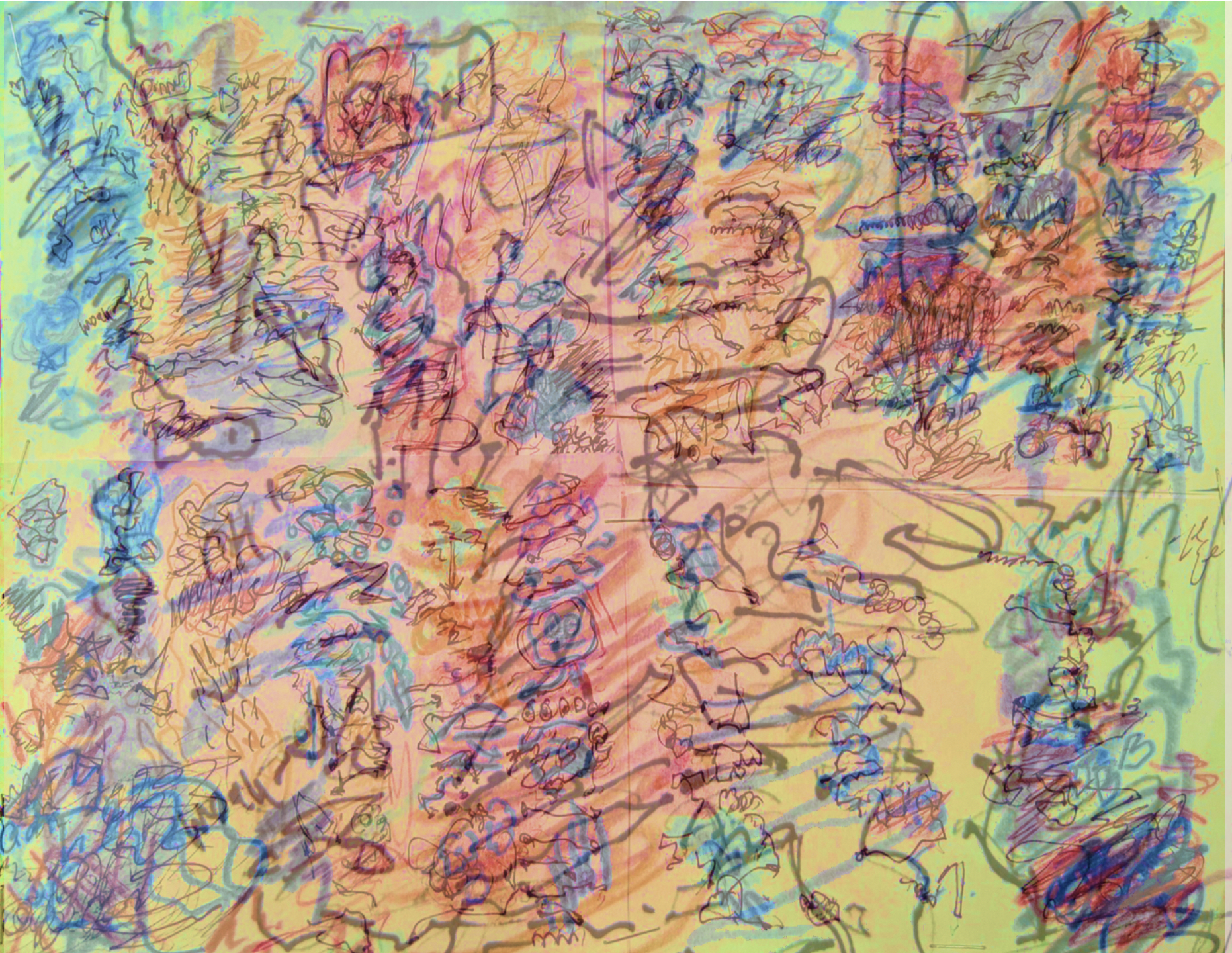
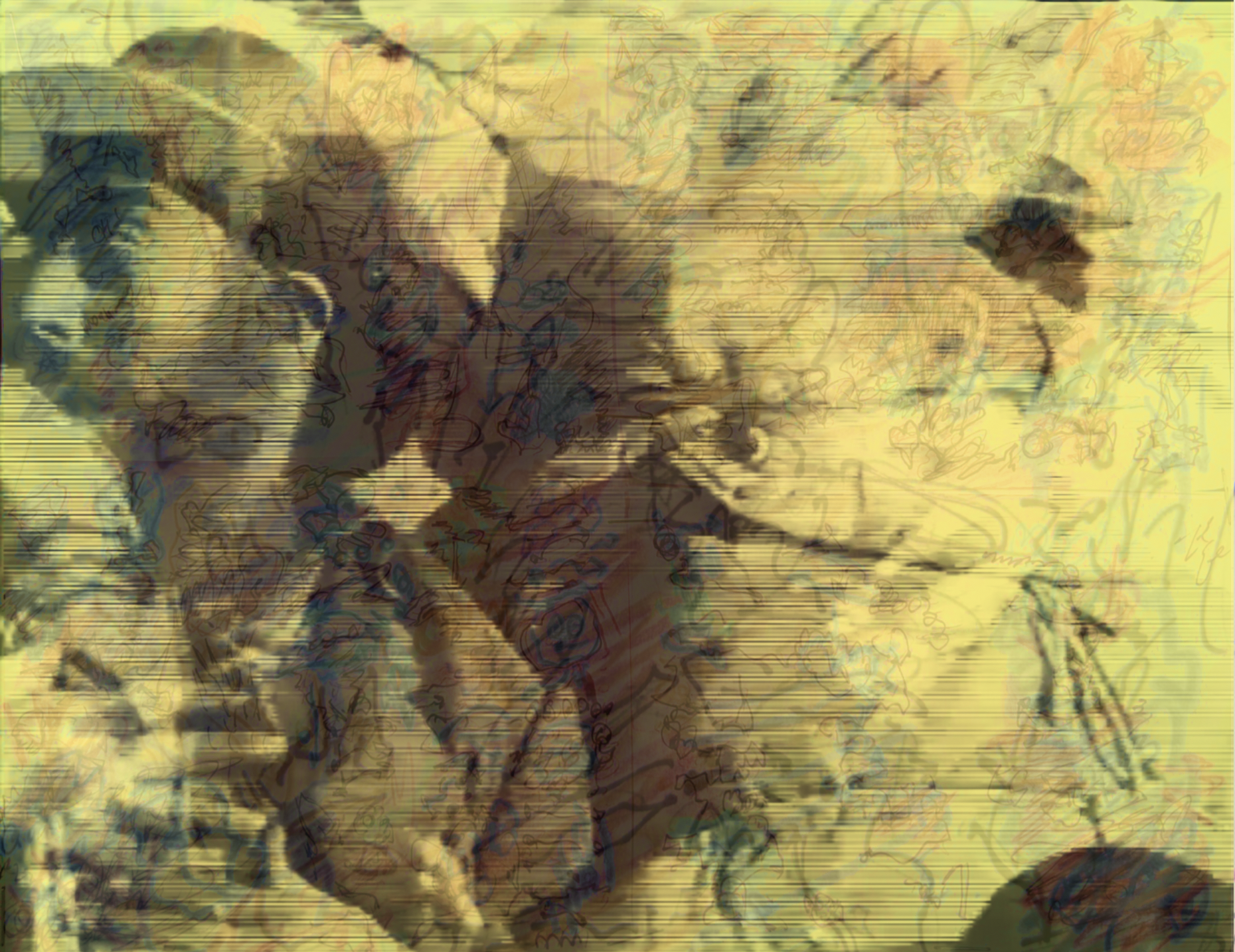

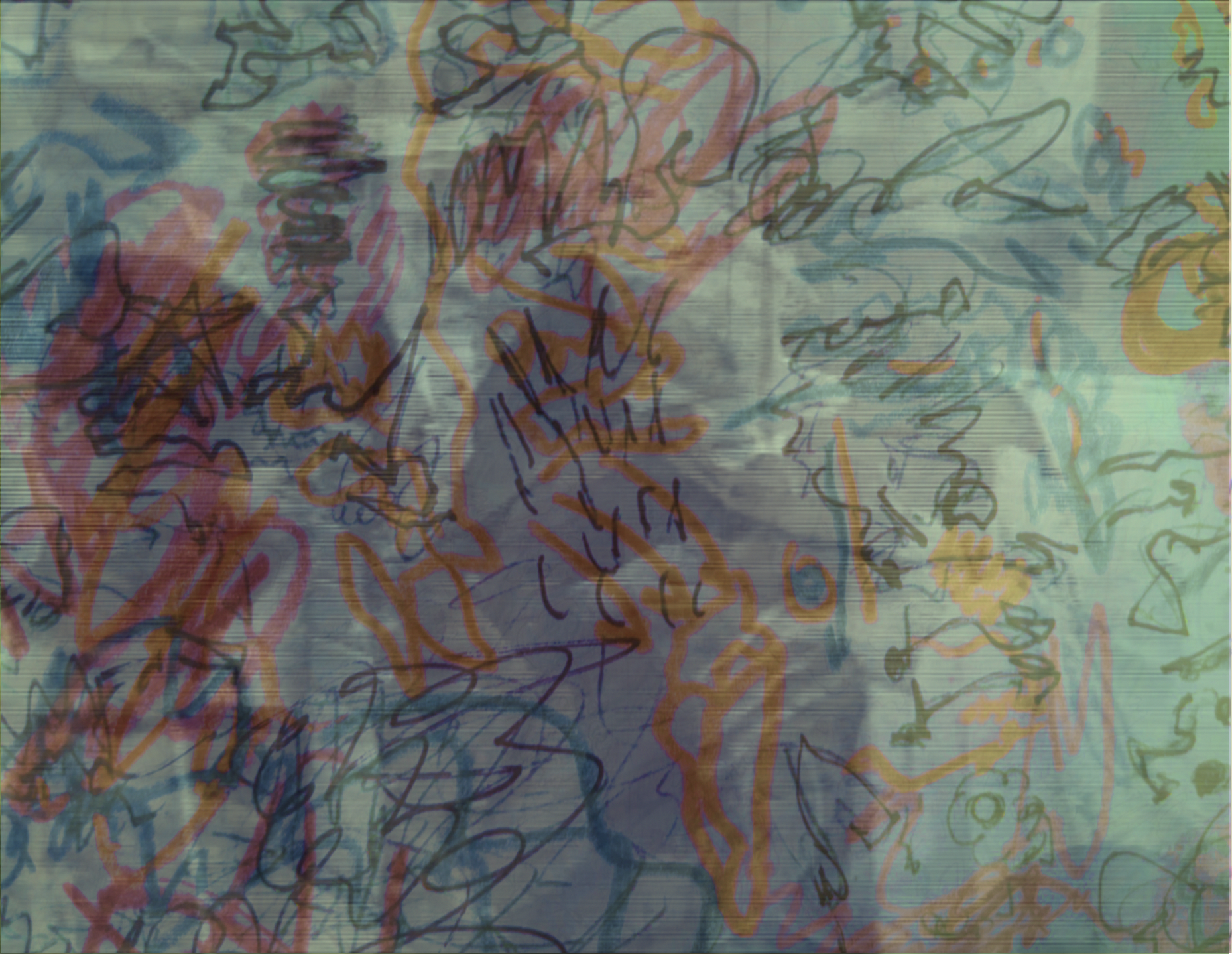
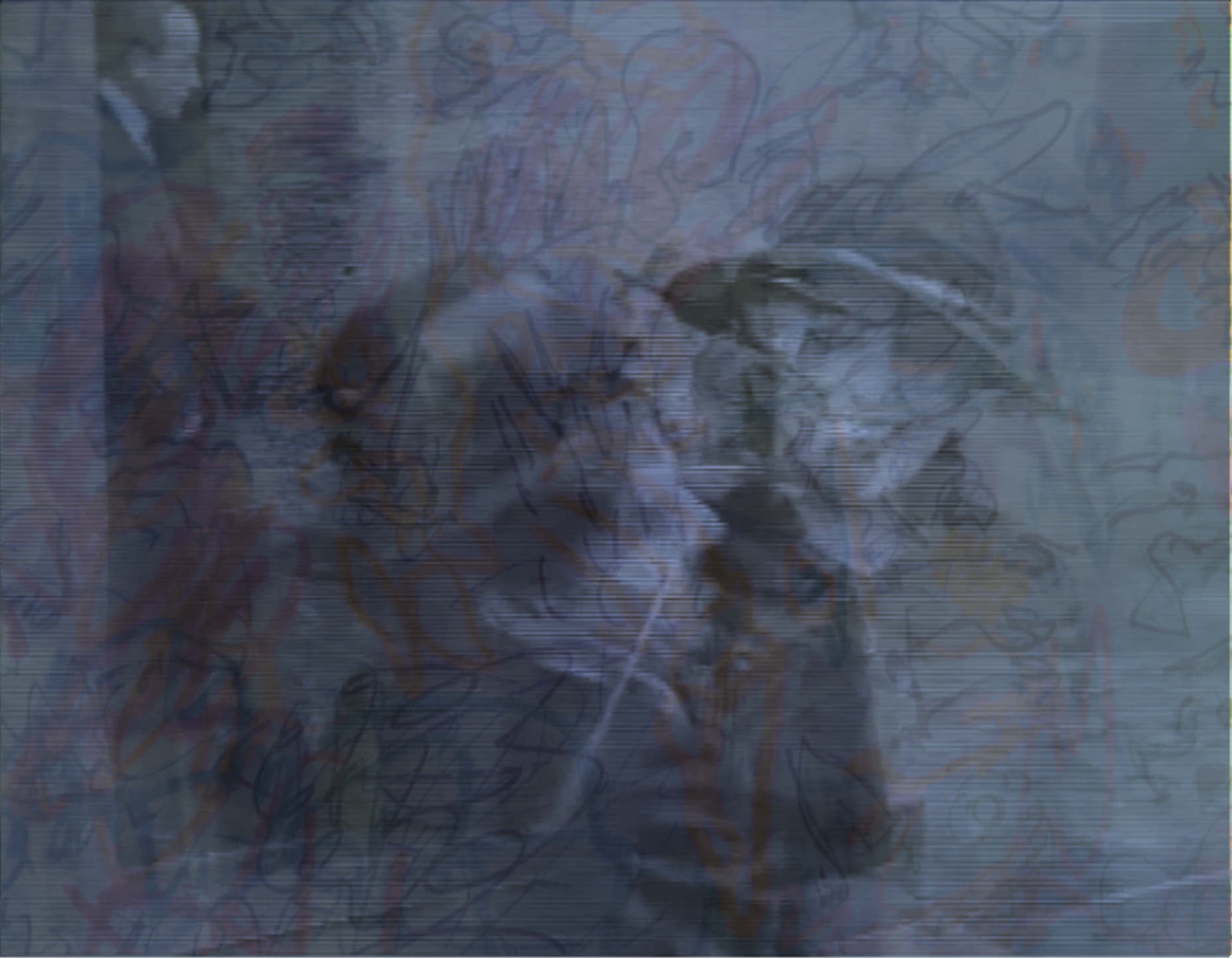
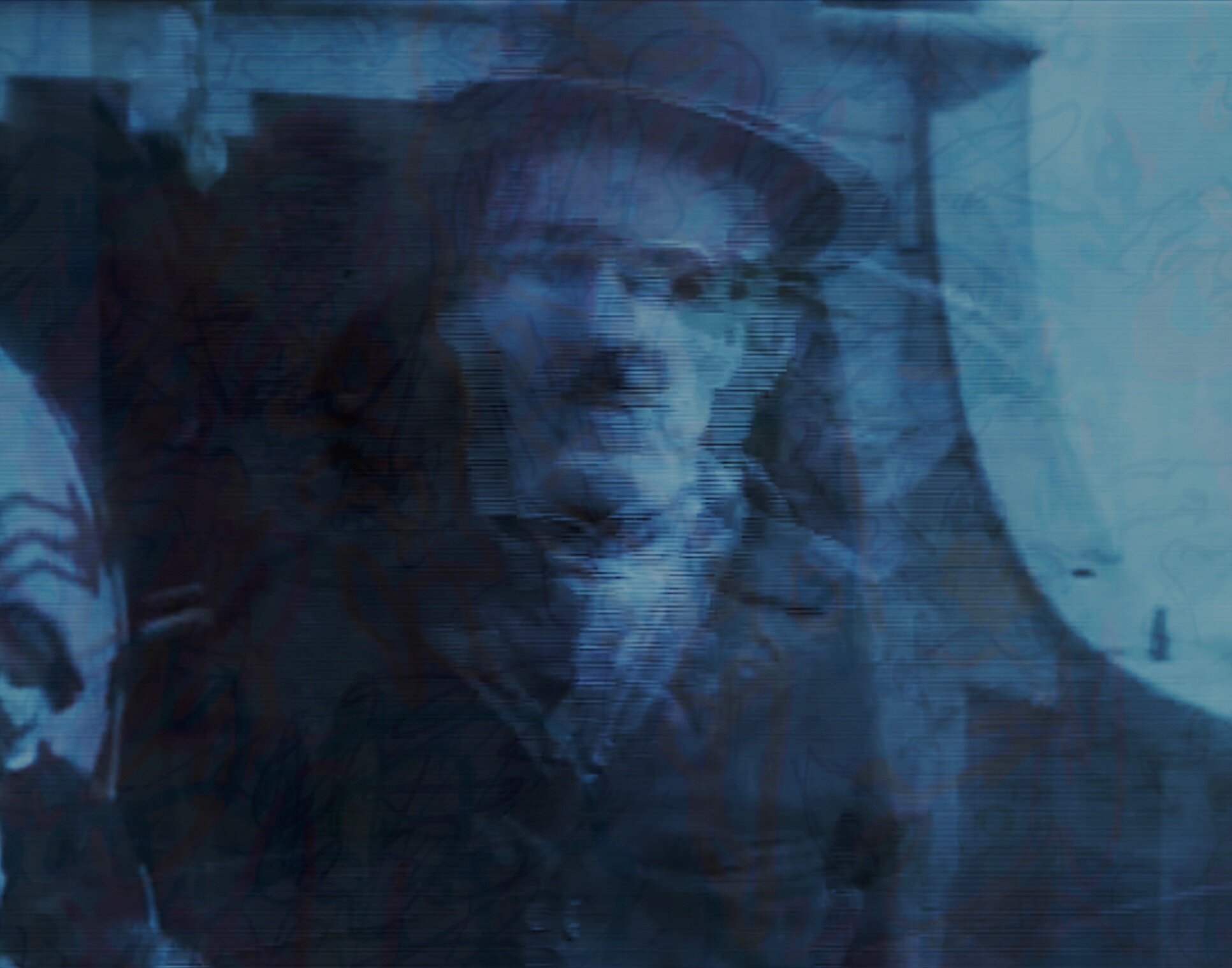
Recording Sound-kits
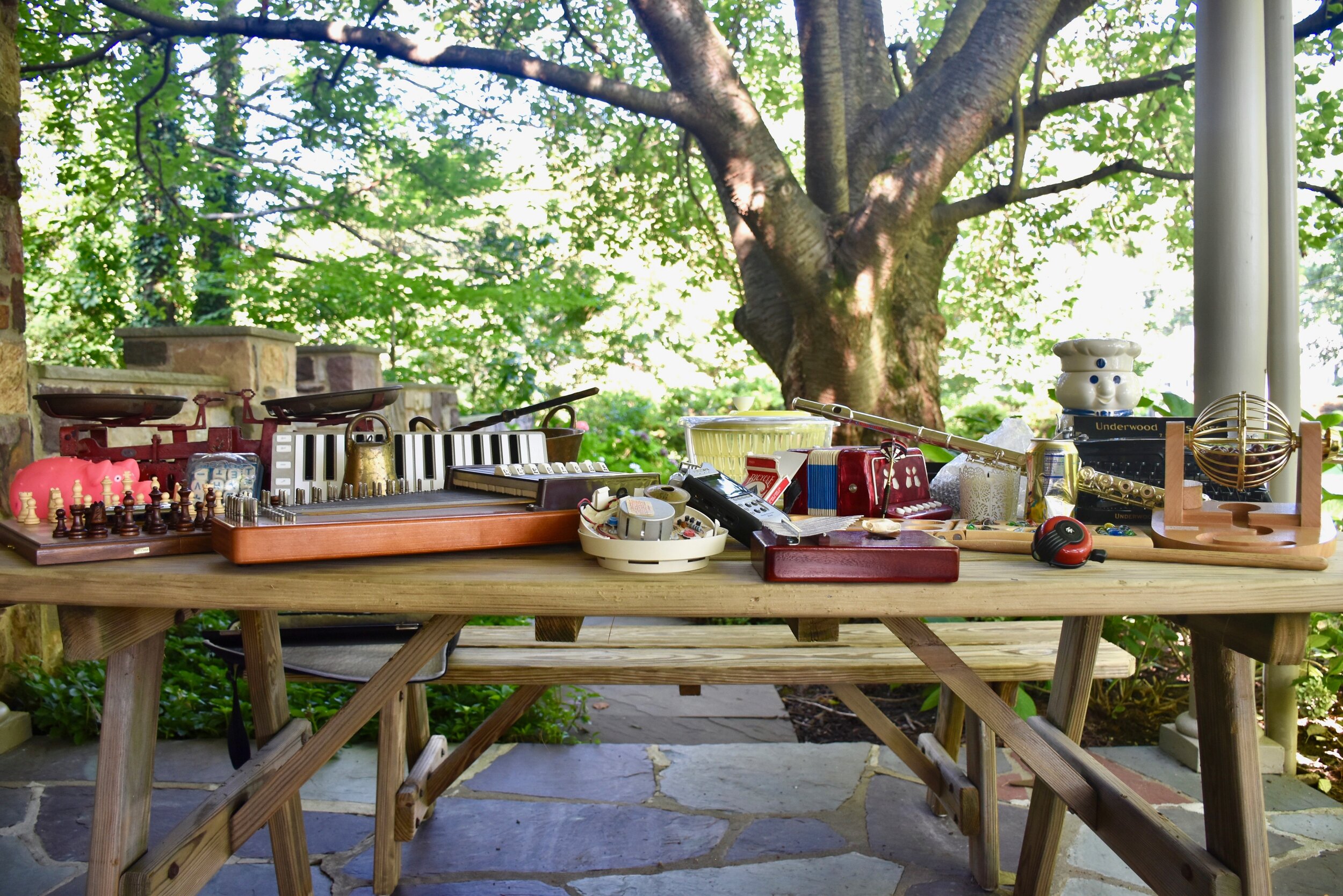





As I reference in my blog entries for the Westworld Scoring Competition and When Are You Going To Cut The Grass, creating sound-kits for projects is a terrific way to become sonically inspired. It also puts me on the right path to crafting an original soundscape for each project that I work on.
The live-recorded sounds became one of the main elements in the score for The Immigrant. They functioned as the puzzle pieces that crafted twelve individual rhythms while also acting as “unrealistic foley”. This means that character’s motions and gestures are accented by bizarre sounds like muted bike bell rings and a dog toy squeak.
In total, I recorded over 800 separate sounds for this score, and created original and in depth sound-kits. These sound-kits included, at times, dozens of sounds per object, all named with specificity to allow for productive and quick use while composing. You can access a sound log with almost all of the sounds in the score at this link.
Some sound-kits that I created were from a dog toy, the wooden blinds in my bedroom, a broken bike bell, a broken smoke detector, bubble wrap and shells from Delaware. You can hear individual recordings from their sound kits below:
I think of these little recordings as pieces of a much larger puzzle. Layering can lead to fascinating textures and timbres. For example, if I layer the 22 bubblewrap recordings on top of each other, the result is this:
With the layering, the bubble wrap sound is elevated to something else entirely. This layered track reminds me of the crashing of waves on a beach. It could also perhaps be synched up with someone exhaling to great effect.
This technique of layering becomes critical when crafting complex rhythms. Below are 5 of the 12 rhythms that I created for this score, as well as two screenshots of Beat 11 and Beat 7. Feel free to zoom in on the images to get a close look at the individual sounds that were used to craft the beats.
Beat 11 in my Logic X file. It is a conglomeration of Foosball kicks, matches falling, darts hitting a dart board, an a crow cawing.
Beat 7 as it looks in my Logic X file. It is a conglomeration of bike bell snaps, stone hits, autoharp picks, and tons of metallic rods and coils.
Creating these rhythms was an improvisational experience. I, almost randomly, placed different sounds next to each other to see how they sounded. It was quick work too. Each of these rhythms did not take more than 10 minutes to compose.
The next step after crafting the beats was to create layered rhythmic experiments. I did this by taking smaller parts of each of these rhythms, and then blending those with smaller parts of other rhythms. The result of this blending can be heard during the dice rolling sequence early on in the film. Here is an isolated track of just the rhythm layer:
This sequence is made up of smaller parts of Beats 1, 2, 3, 4, 5, 6, 7 and 10. So in reality, even though I made twelve individual beats, I set the stage to making infinite combinations of these smaller rhythms. I accumulated over 50 “smaller part” files, and these could be combined and layered in any number of ways. You can see what the dice rolling sequence looked like in my Logic file below
The rhythms are the heartbeat of this score. In combination with the “unrealistic foley”, they also make the film feel surreal, like a reflected sound-world of reality. We are hearing what Chaplin’s character is hearing. Through his confusion and displacement, his perception of reality alters, leading to normal objects suddenly becoming relentless rhythms and synching up with gestures and motions. Through these object rhythms, the viewer/listener is place in the aural position of Chaplin’s character.
The entire Logic File for this film. You can see all the different elements here, from the synths to the textures to the rhythms to the sampled instruments to the orchestra to the unrealistic foley.
The Rest of My Orchestra
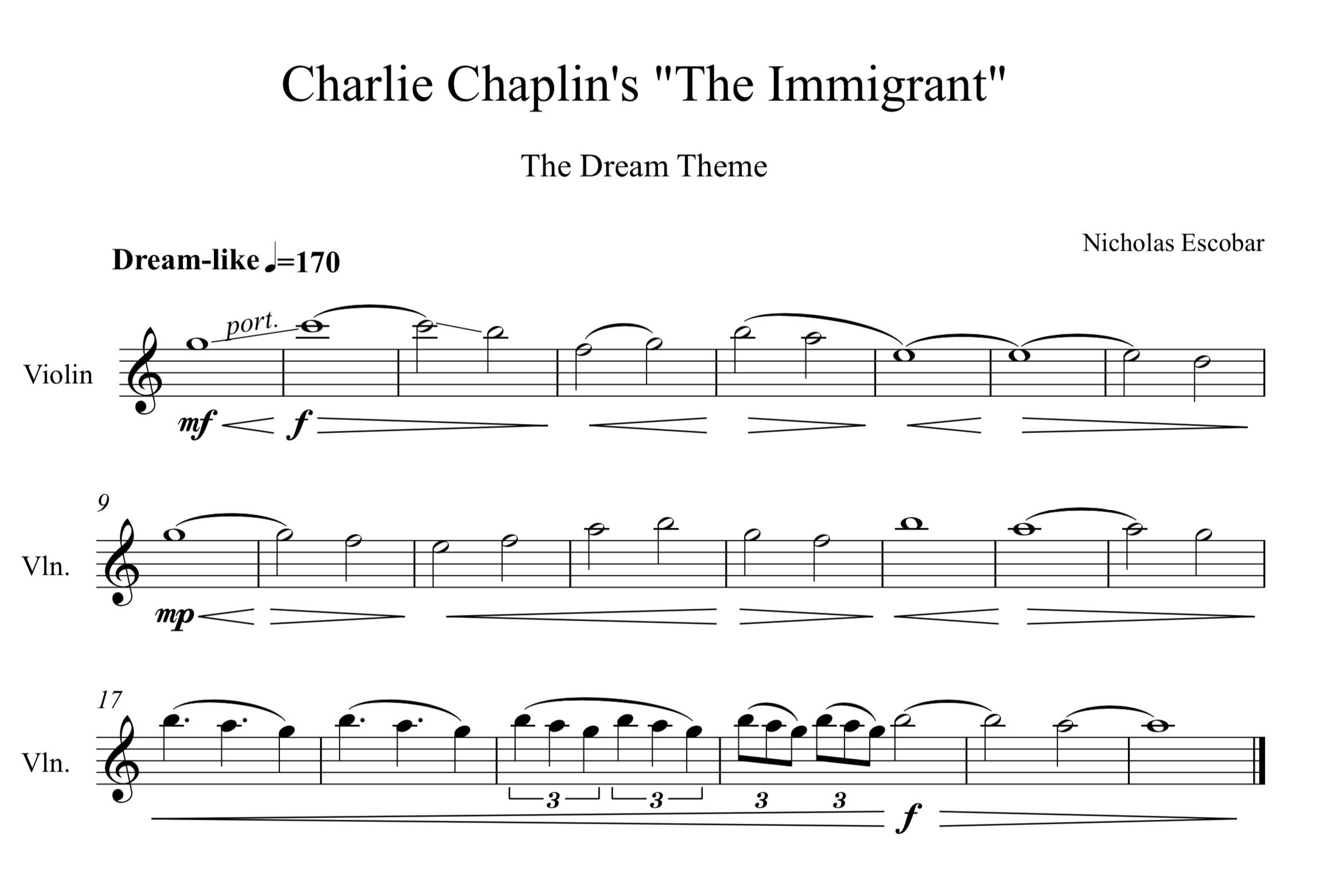
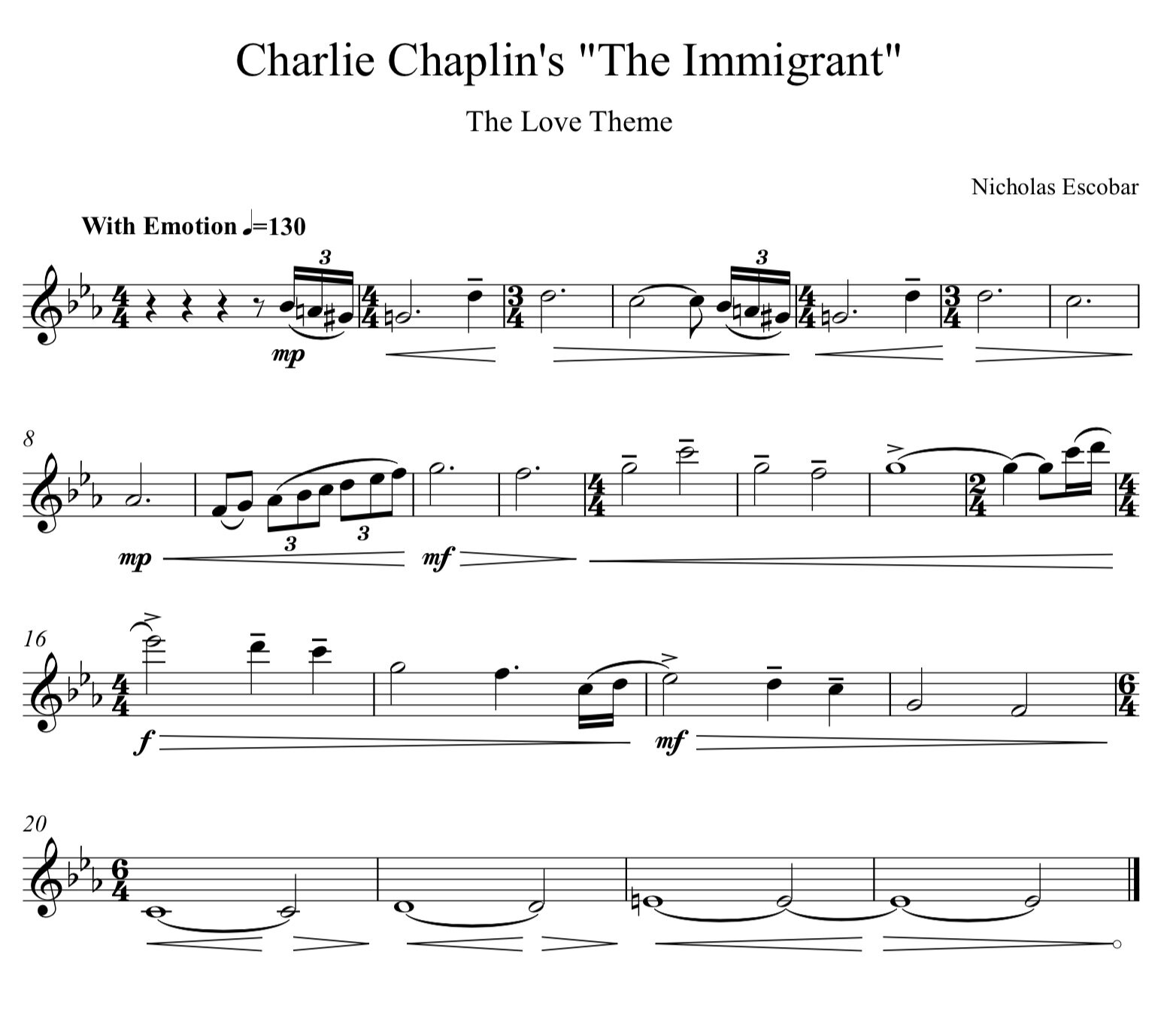
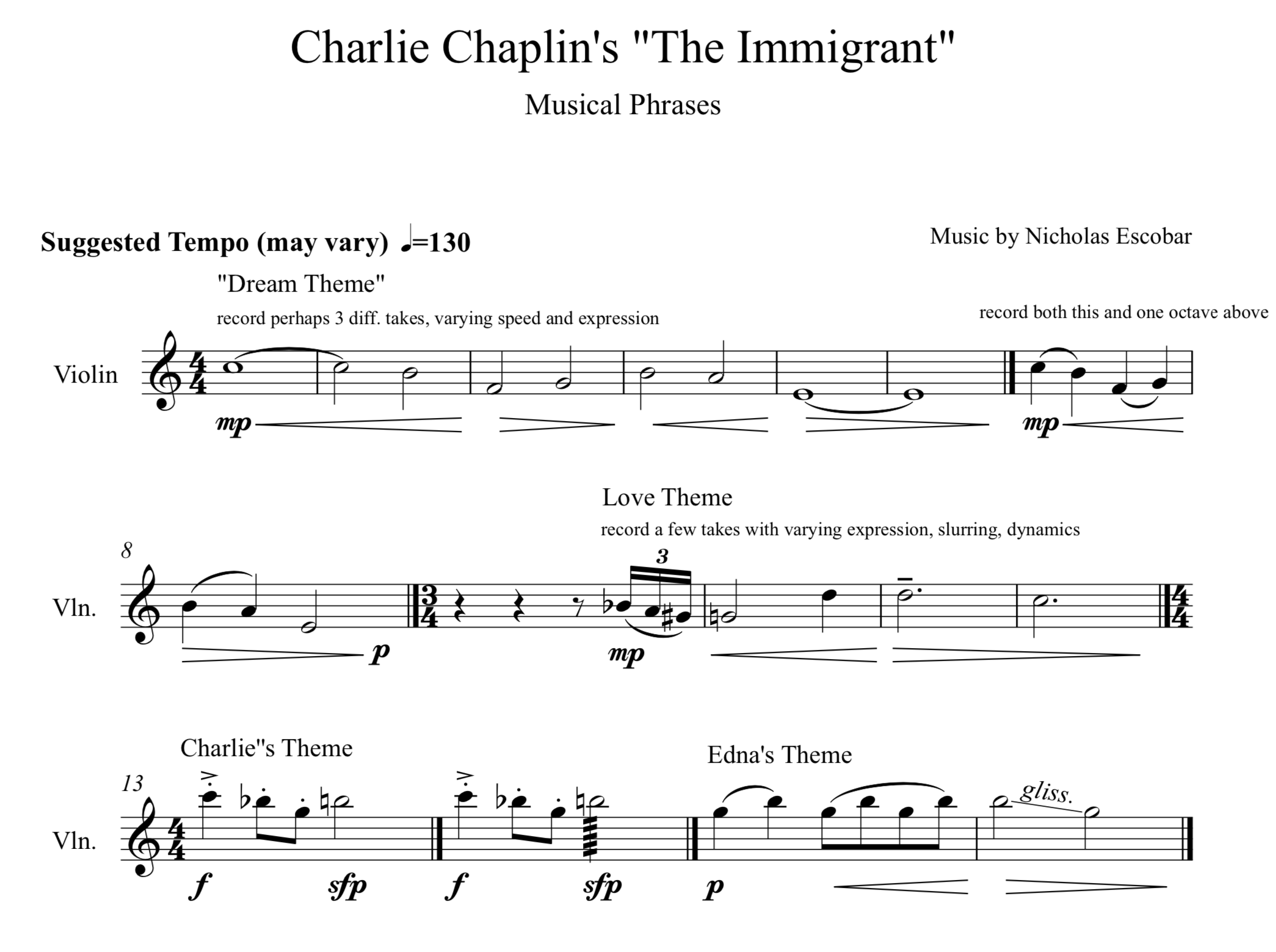
This score is, at its heart, a hybrid. Musically, I’m drawing from artists like Django Reinhardt, Miles Davis, Tchaikovsky and Chopin. I’m also drawing from free jazz. As such, there are romantic melodies in the tone of Tchaikovsky (while also drawing from Chapin’s own composing style) layered on top of crazed improvised piano solos and bass lines.
This hybrid nature was intentional, because I sought to sonically bridge the gap between 1917 and 2020. I revisited Chaplin’s films Modern Times and The Gold Rush (both are incredible, I highly recommend) and something that stood out to me was how Chaplin truly makes the orchestra sing in his scores. His music is emotional and nuanced, and directly connected to the characters and the tone of the films. My “Love Theme” and “Dream Theme” in The Immigrant seek to carry this emotional weight.
It was a pleasure to work with violinist Lily Honigberg on this score. I have two specific moments in the score in which Lily recorded a notated violin part: when Charlie first sees Edna in the dining hall of the ship, and when Charlie urges Edna to marry him at the very end of the film. In the first moment Lily plays “The Dream Theme” and in the second “The Love Theme”. I also notated out “musical phrases” which are basically short, notated snippets of some of the melodies from the film (Charlie’s Theme, Edna’s Theme, The Dream Theme, The Love Theme”). In addition, I had Lily record individual notes from “The Dream Theme” (C, B, F, G, A, E) with differing techniques, like pizzicato and spiccato. So the violin textures that you hear at the very beginning of the film, the arrival at Ellis Island and when Charlie sees Edna at the restaurant are not actually notated cues being played live. They are instead curated melodic lines that I made out of either isolated snippets of themes or individual notes.
The ambient soundscapes in this score were recorded in a number of locations: Barcelona, London, Edinburgh, Paris, Killin (Scotland), Villanova (Pennsylvania) and Poland (Maine). These soundscapes take on narrative meaning in the score. When Charlie is sitting with Edna at the 8-minute mark in the film, in the background you are hearing a recording crickets in the woods in Maine at night. I viewed these crickets sounds as representing the home that Charlie and Edna were leaving to come to America. The cricket’s presence in this scene represents homesickness and nostalgia. At the end of the film, over the credits, you can hear the sound of a pontoon boat cutting through Thompson Lake in Maine. The low-end rumble of the moving water harkens back to the boat at the beginning of the film. It acts as a reminder, perhaps a traumatic one, of the journey. The rushing cars that you hear while Chaplin is dealing out cards on the boat act as a sonic prediction for the boat’s eventual destination: America. It shows that the destination is on the passenger’s minds at all times. These ambient soundscapes create fascinating nuanced sonic moments.
Another key element in this score are sampled instruments. I created instruments out of specific cues from the score, rhythms and object sounds. Like the ambient soundscapes, these sampled instruments cause the score to become a form of memory for Chapin’s character. For example, when I sampled the “Dream Theme” cue from the dining hall on the ship, it became a tableau of repeated material, translucent and morphing. As this sampled cue plays when Charlie is with Edna at 8:00 in the film, the sound becomes a memory. Charlie is thinking about the first moment he saw Edna, and how he fell in love with her, while simultaneously thinking about the money in his hand and how that could lead to his dream life in America.
In this score you also hear the sampled sound of a crow caw (when the Artist bows) and the sampled sound of a broken smoke detector (as Charlie places beans in his mouth). These are sounds that appear in the rhythms and unrealistic foley in this score, but like the sampled cues, they are now distorted and changed. The sampled beats become erratic and disturbing explosions of sound. You can hear one playing at 16:40 in the film as Charlie realizes that he has lost the precious coin.
I experimented with crafting short, complex textures in a separate Logic file which I then layered into the score. These textures began as individual short compositions, which I broke up into smaller parts (like I did with the rhythms) and then layered further. The results are sound pieces that feel entirely improvised and organic. Equal parts eerie and frightening. My favorite one of these textures is titled “Long-form Texture”, which plays during the Ellis Island sequence. It has this incredible motion to it, and feels so chaotic. You can hear “Long-form Texture” below:
All these elements, in addition to the distorted processed flute (played live by me) and expressive synthesizers, add up to a score that feels improvised and has an immediacy to it. It feels like you are experiencing this sonic world in real-time with Chaplin’s character.
Final Thoughts
I never grew tired of watching The Immigrant over the last three months. I’ve seen it countless times and have practically memorized every moment in the film. Yet, each time I watch it I smile, laugh and feel for the characters. That is a testament to Chaplin’s gift as a storyteller and filmmaker.
It is important to look at the historical context around this film. The exclusionary and restrictive Immigration Act of 1917 was enacted just four months prior to The Immigrant’s premiere. This act imposed a literacy test and sought to limit the amount of immigrants entering the country. Just a few months later Chaplin released a film that made the immigrants the protagonists and heroes and focused on their trails and tribulations while also alluding to the possibility of a prosperous future in America. Though largely a comedy, it does not hold back imagery of sickened passengers on the boat, violence at the arrival to Ellis Island, and intense poverty and hunger. Chaplin humanizes the immigrant experience instead of simply casting them off as, in the words of the Immigration Act of 1917, “aliens”.
I would argue that this film is just as relevant now as it was in 1917. That is why I created a modern sound, a sonic reimagining, to bridge the 103-year-old gap and add new musical context to this Chaplin classic.
As always, thank you for reading. If you have any questions about this project, feel free to reach out by email (my email is nicholasescobarcomposer@gmail.com) or the Contact Form at the bottom of this page. You can also listen to the soundtrack on my Soundcloud as well as individual tracks that I have released on YouTube (both linked below). Thank you again!
Your’s Musically,
Nicholas Escobar
Listen to the Soundtrack for “The Immigrant” on My Soundcloud:
YouTube Links to Trailer + Tracks from “The Immigrant” Soundtrack:







